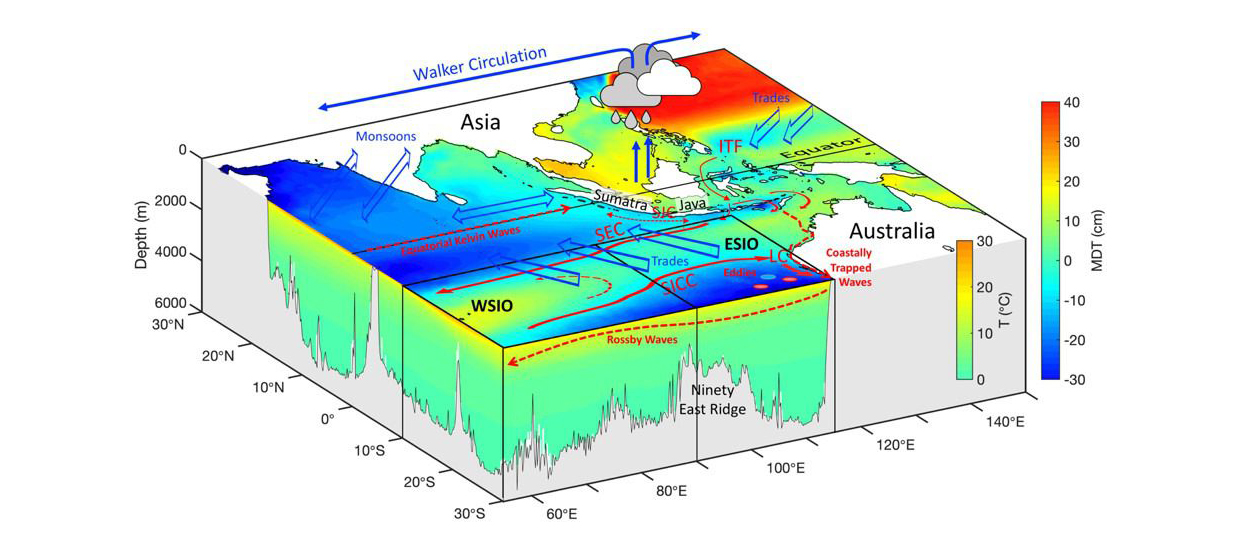New Publication In "ScienceAdvances": Unprecedented Reduction And Quick Recovery Of The South Indian Ocean Heat Content And Sea Level In 2014–2018
Denis L. Volkov1,2, Sang-Ki Lee2, Arnold L. Gordon3, Michael Rudko1,2
1 Cooperative Institute for Marine and Atmospheric Studies, University of Miami, Miami, FL, USA
2 National Oceanic and Atmospheric Administration, Atlantic Oceanographic and Meteorological Laboratory, Miami, FL, USA
3 Lamont-Doherty Earth Observatory, Columbia University, Palisades, NY, USA
The subtropical southern Indian Ocean (SIO) is one of the major heat accumulators among the oceanic basins. A decade-long basin-wide warming and associated sea level rise in the SIO during 2004–2013 ended abruptly, immediately following the onset of the strong 2014–2016 El Niño. Interestingly, this unprecedented drop of the SIO heat quickly recovered during the weak 2017–2018 La Niña. In a study published in Science Advances, we used observations and idealized model simulations to explore what caused the abrupt reduction and recovery of the SIO heat and sea level during 2014-2018.




